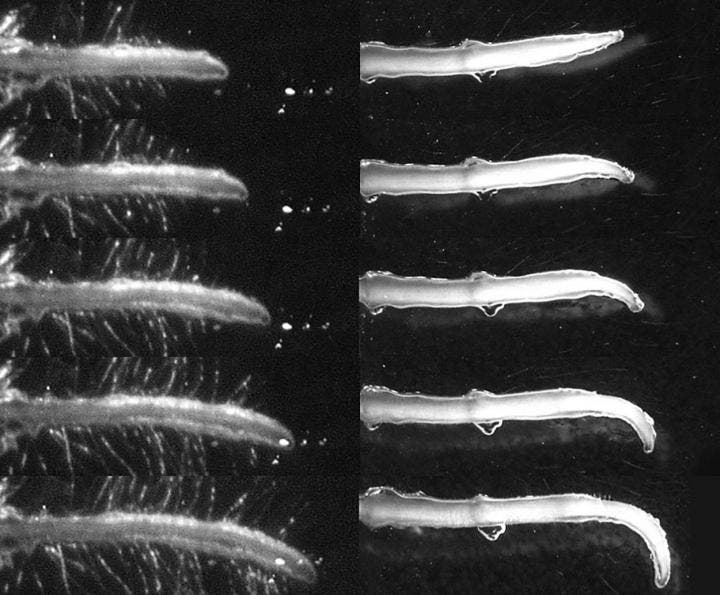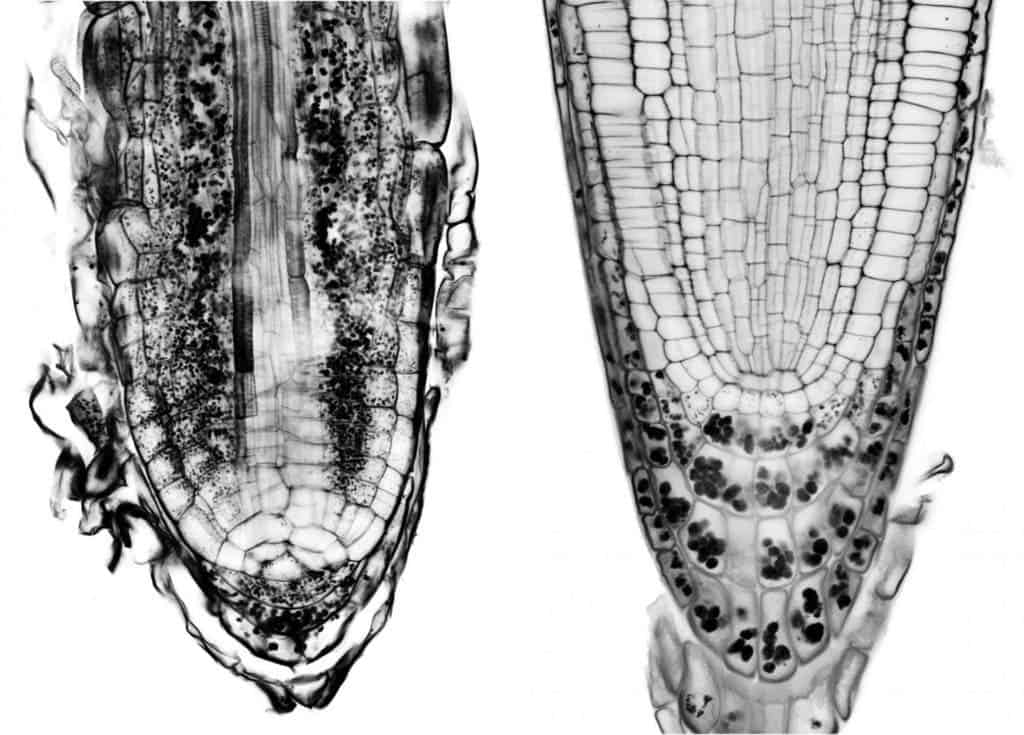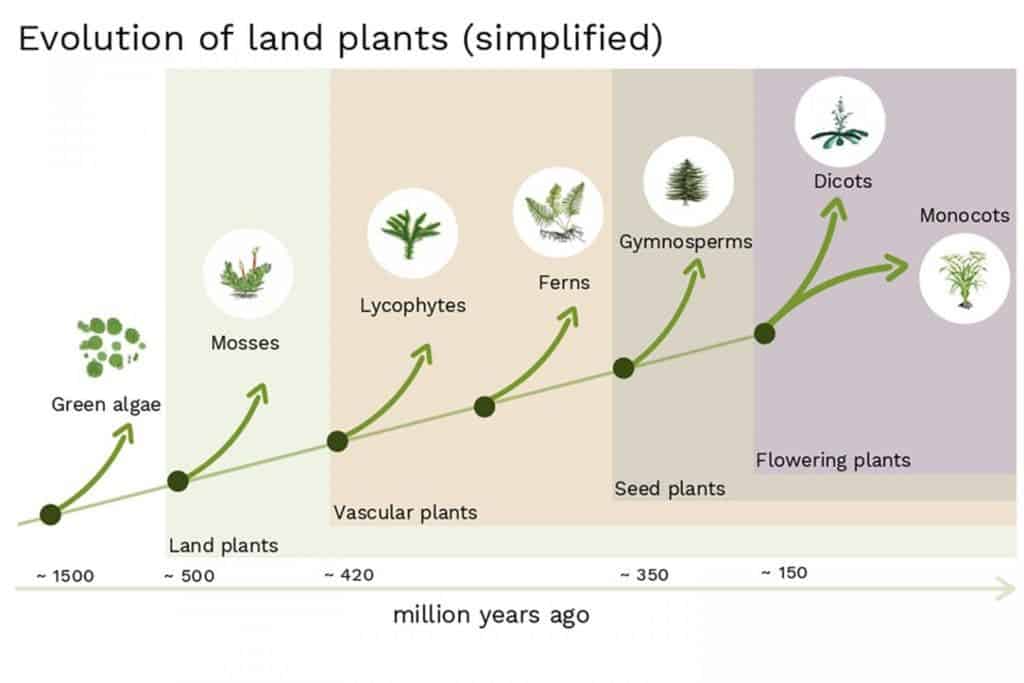It’s common sense that plants have root systems that grow downward, following gravity. However, it hasn’t always been like this. Plant-life first evolved in water and only began spreading to land around 500 million years ago. Although the evolutionary origin of the mechanism of gravity-induced root growth — called gravitropism — remains a mystery, scientists have now uncovered new insights that offer a broader view of how and when gravitropism evolved.

A 36-hour timelapse of slow gravitropism (left; a fern) and fast gravitropism (flowering plant). Credit: IST Austria, Yuzhou Zhang.
The researchers at the Institute of Science and Technology of Austria analyzed various plant species, representing various lineages from the more primitive mosses, ferns, lycophytes, to the more modern seed plants (gymnosperms and flowering plants). The roots of each type of plant were forced to grow horizontally so that the researchers could observe if and when the roots would bend downwards to follow gravity.
Mosses and other rudimentary types of plants turned out to have a very slow gravity response. However, gymnosperms and flowering plants, which first appeared around 350 million years ago bent downward much faster, thereby exhibiting a more efficient form of gravitropism.
By analyzing the distinct phases of gravitropism, the researchers led by Yuzhou Zhang, a postdoc at IST Austria, identified two crucial components. One is represented by amyloplasts — plant organelles filled with starch granules — which function as a sort of gravity sensor. This particular component was particularly evident in gymnosperms and flowering plants which have amyloplasts concentrated in the very bottom of the root tips. In contrast, amyloplasts in ferns, clubmosses, and firmosses are randomly distributed within and above the root tip.
Amyloplast perception is then signaled from cell to cell by the second gravitropism component: the growth hormone auxin. Genetic experiments on Arabidopsis thaliana, a small flowering plant native to Eurasia and Africa and a common model plant used in research, revealed that a transporter molecule called PIN2 directs auxin flow.
Almost all green plants produce PIN proteins, but it’s only in seed plants that PIN 2 molecules gather at the shoot-ward side of the root system. This unique configuration to seed plant plants enables them to transport auxin towards the shoot, allowing the growth hormone to travel from the place of gravity perception to that of growth regulation.

Amyloplasts are filled with starch granules (black dots). The organelles are seen her in the root of a fern (left) and that of a seed and flowering plant (right). In the latter, the amyloplasts gather at the very bottom of the root tip, enabling more efficient gravitropism. Credit: IST Austria.
Beyond gaining a better understanding of how plants sense and follow gravity for optimal growth, the researchers believe that their findings could also be of practical significance.
“Now that we have started to understand what plants need to grow stable anchorage in order to reach nutrients and water in deep layers of the soil, we may eventually be able to figure out ways to improve the growth of crop and other plants in very arid areas,” Zhang said in a statement, adding that: “Nature is much smarter than we are; there is so much we can learn from plants that can eventually be of benefit to us.”
The findings were reported in the journal Nature Communications.










